BEST LIGHT AND COOL ROAD BIKE HELMET

When it comes to finding the best road bike helmet, I’ll admit to a bias. As a cycling enthusiast, speed is a big part of why I love cycling. I want all my gear to help me go fast including my helmet.
So when I first started looking for the best road bike helmet, I focused on aero road helmets rather than standard ones that claimed to be ultra-light or highly-vented or super-safe. My review of aero road helmets found that the best of them provided nearly as many watts of savings as a pure aero helmet and gave me as much cooling and comfort as standard road helmets I’d worn. Many also looked more like a road helmet than the aero ones that time-trial and track riders wear.
Yet I’ve often wondered whether there were helmets that were even lighter or cooler, enough to feel the difference on those hot, climbing rides or dusty gravel days when I’m not going at speeds to get any added benefit from my aero road helmet. Self consciously, I also thought about whether the more rounded shape, short tail, and fewer vents on the aero helmet I now wear might look a bit pretentious grinding up 10%+ pitches in the mountains or bumping along dirt and gravel roads.
As many of us roadies do, I went online looking for reviews of the best road bike helmets. Most were short, buyer’s guide type summaries. Others were longer but mainly parroted product features rather than the writer’s own experience. Had any of them actually ridden these helmets for more than a few hours, let alone really tested them for miles on hot and muggy days? It was hard to tell.
So I set out to see if there were road bike helmets noticeably lighter and cooler than the aero road helmets I’d reviewed earlier, so much so that I and fellow roadies could justify buying one because we’d want to wear it instead of our aero helmet on enough days during the season.
Or, if other road cycling enthusiasts were looking to replace their existing standard road bike helmet, which is the lightest and coolest, that also fits well, is comfortable and not too expensive?
After looking around to see which helmets I might want to evaluate, I put a stake in the ground – test those that cost US$250 or less, weigh around 250 grams (medium), and that the maker described as both their lightest and coolest road bike helmet. They should also look like standard road helmets. Those requirements narrowed the field considerably.
WHAT MATTERS MOST
In my review of aero helmets, I discussed the things I’ve found matter most in choosing between aero road helmets. All of that applies here, except with more of an emphasis on weight and cooling and less on aero performance. You can click here and scroll down a couple of times to dig into the details there if you’d like.
Here’s a summary of the criteria I used to find the best road bike helmets for this review.
Safety – All bike helmets should have a safety compliance sticker showing they meet a national safety standard. For example, helmets sold in the US must meet the CPSC (Consumer Products Safety Commission) standard. Those sold in Canada must have the CSA standard, Australia and New Zealand the AS/NZS, Great Britain the BSI, Europe the CE, Japan the JIS, etc.
If you want to compare how much safer one road bike helmet is than another, there’s a fair amount of debate (and marketing) around what kind of tests should be done and what type of technology a helmet needs. The best of both attempts to test and protect you from a range of potential impact angles and forces that might cause a concussion.
There’s plenty of detail on the different approaches and what’s behind them in the review I referenced above. For this summary, I’ll merely say that all the helmets we tested met the US standard, and most also use the MIPS licensed technology.
Note that helmets using designs and safety technologies other than MIPS and ones with none of these technologies also rank highly in tests done by labs that use protocols that favor MIPS technology.
Fit – If a helmet doesn’t fit you well, all the helmet safety stickers and protection systems and arguments about which are better at protecting you from a concussion or worse aren’t going to help you much. Consumer Reports published a good list of things to do to make sure your helmet fits safely. I encourage you to review it and decode the numbers in the graphic below.
Fitting safely and fitting comfortably aren’t the same things. You can have a helmet that fits safely but isn’t comfortable; you can have a helmet that fits comfortably but isn’t being worn safely.
Ideally, you pick a helmet that you can fit both safely and comfortably. More on comfort in a minute.
In getting your helmet to fit right, I look at
- How adjustable is the helmet?
- How good are the adjustment devices?
Comfort – Of course, comfort is subjective. We often evaluate comfort on how light the helmet feels and how the pads, straps, and clips feel against your head, face or chin. Another implicit measure of comfort comes in how soon after your ride starts you forget you’ve got your helmet on or how long a ride you can do without wanting to take it off.
The mismatch between fit and comfort I mentioned above can be due to wearing a road bike helmet that is best suited for a head shaped differently than yours. For example, if you’ve got a more oval head shape, a helmet designed for a rounder one will pressure you in the front or back and give you too much room on the sides. If your head tends to be rounder, a helmet with a more oval shape can be tightened to fit you on the sides of your head yet never tight enough in the front and back to avoid moving up and down when you ride.
Just like with shoes made in lasts that can be too narrow or wide for your feet despite being your size, helmets are also made in shapes that are more oval or round, or somewhere in-between. In my review of aero helmets, I discovered these distinctions not only by wearing a bunch of helmets from different brands but by measuring and plotting their length and width.
In this review, my fellow testers with conveniently different head shapes judge how comfortable a helmet is or might be when worn by a rider whose head and helmet shapes are best suited for each other.
Cooling – As with fit and comfort, cooling and venting are different things. Many helmet suppliers boast about the size and number of vents a helmet has. While more or larger vents should enable better cooling, they don’t determine how much better one helmet will cool your head versus another.
Where air enters your helmet, how it flows across your head, and where and how it exits is far more a contributor than the size and number of vents.
For example, I’ve found some helmets that have a lot of front vents don’t cool the top of your head because there aren’t enough vents or the right placement of vents at the top of the helmet to pull the air up and out. Other helmets have smaller or fewer vents but they keep your head cooler than those with more and bigger vents because of the way the whole arrangement of vents sucks the air across your head and out the back of your helmet.
As you’ll read in a moment, my fellow testers also have different cooling requirements. Some of us naturally sweat more than others so we have different cooling requirements.
Noise – Airflow through and around a helmet can also create or dampen noise. The size or position of your ears in combination with a helmet’s size and shape can also affect the amount of airflow you hear. Your speed, body, and head position on the bike can contribute to noise level as well.
With all these variables, we tried to identify any helmets that were particularly noisy.
Sunglasses fit – Depending on the type and model of sunglasses you wear and the shape and strapping on your helmet, your sunglasses and helmet can get along famously or you can have a non-negotiable conflict between them.
While more usually the case with aero helmets that cover more of your forehead than the best road bike helmets, the top of your sunglasses can compete for space with the front of your helmet.
More often, it’s the arms of your sunglasses that come into contact with the circumference strap from your helmet either along the side of your head or above your ears.
With multiple testers using different types of sunglasses, we’ve identified these conflicts.
We’ve also looked at how well sunglasses “dock” or fit into these helmets when you want to take them off for a section of a ride or a rest stop.
Looks – Oh yeah, we roadies are a self-conscious group. Does the helmet look standard, is it unique in a good or bad way, come in enough colors to match with our bikes or kit or high-viz options, look well made?
Most of these helmets stand out in one way or another. I’ve pointed out where they do.
Price and Weight – I used USD $250 as the upper market price limit and about 250 grams as the target, medium-size helmet weight for those I selected to review.
These filters and my added one that the brand claims the helmet is both the lightest and coolest (or often, the best vented) in its line narrowed the field a good bit.
The weight of the same helmet can differ depending on where it is sold as it may have to add or change something to qualify for the safety certification of one country or region where it doesn’t in another. And, the actual weight of the helmets I report in the table below, as with most cycling gear, aren’t always what the brand claims it will be.
For those reasons, I provided a little slack in the weight filter (but none in the max price requirement) in choosing which helmets to review.
Find what you're looking for at In The Know Cycling's Know's Shop
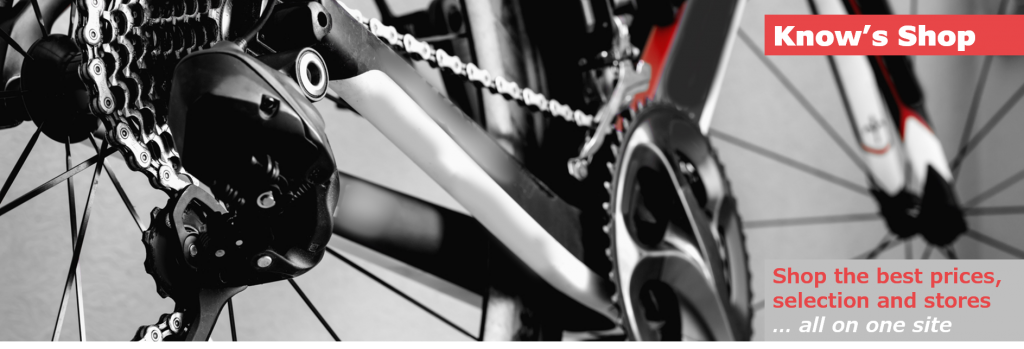
- Compare prices on in-stock cycling gear at 15 of my top-ranked stores
- Choose from over 75,000 bikes, wheels, components, clothing, electronics, and other kit
- Save money and time while supporting the site when you buy at a store after clicking on a link
RATINGS AND REVIEWS
For reasons I’ll explain below, my fellow testers Nate and Miles did the bulk of the field testing for this review while I acted primarily as the questioner and reporter of their experiences. They both wear medium size helmets (I wear a large) and ride road and off-road bikes (me too) very fast and long (uh… not so much during the hottest days this summer).
At the same time, they bring different perspectives when it comes to helmet choices. Their head shapes are different as are their current helmet and sunglass preferences.
Nate wears a Specialized S-Works Evade aero road helmet when he’s riding hard on the road. Fits his long oval head like a glove. He puts on his Giro Synthe when riding CX, MTB, and commuting mostly to prevent wear on the Evade. It’s a bit too wide, provides less coverage than the Evade, doesn’t have sufficient height adjustment for his head, and looks a bit “mushroomy” (per Nate). He also rides with a pair of Oakley Radar EV Path cycling sunglasses and prescription shades with narrow arms.
On the other hand, Miles loves his Kask Protone for its fit, comfort (ideal for his intermediate oval shaped noggin), and combination of cooling and aero performance. He’s worn Giro and Bontrager helmets in the past but wears his Protone on most rides on and off the road now. He’s cool with the large, max coverage 100% Speedcraft SL sunglasses.
Better yet, at least when you’re looking for testers who’ll give you a range of experiences, they have different physiology despite being roughly the same age. Miles rides at a lower heart rate but sweats a lot in the hot and humid summer heat while Nate wears a brimmed cap or beanie even on the warmest days of the year to keep any unkempt hair out of the way.
Knowing this, I figured having them ride and give me independent feedback would turn up both the good and bad about each helmet from different rider perspectives. This would hopefully allow you to see what might work for you knowing your own head shape, sweat tendencies, sunglass and helmet experiences, and the like.
So, with that as context, here are our ratings and reviews of the best road bike helmets that are light, cool, and not outrageously priced.
Bontrager Velocis MIPS – Great fit and comfort at a lower price
Market price USD$210, £150, €200. Available direct here from the Bontrager/Trek site or at Sigma Sports.
Miles, Nate, and I came to a similar conclusion about the Bontrager Velocis MIPS Road Bike Helmet. It fits great and feels great.
Helmets that are somewhere in the middle of the range of those that tend to fit more oval heads or more round heads fit Miles and me well. This “intermediate oval” shape is pretty much where the Bontrager Velocis helmet fits. Yet Nate also found it fit his more long oval head shape well.
The rear BOA dial mechanism you use to adjust the circumference closes around the front, back, and sides of your head with seemingly equal tension. Nate found it the most uniform and comfortable of the helmets he tested.
The straps coming down from the helmet and the clip that connect them below your ear are pretty basic. They do offer a maximum amount of position adjustment, both front-back and up-down. Between the three of us, we used the full range of that adjustment.
On the flip side, they provide more of a V-shaped connection that can sometimes mess with the back of your ear in a way that less adjustable, more U-shaped pre-sewn connectors that also fit right don’t.
It’s a personal preference that’s probably more aligned to what works with your head shape. Miles favors the U-shaped connectors while Nate is more suited to the V-shaped ones. I don’t have a strong preference.
If the fit works well for you, this helmet is also very comfortable. The Velocis’ MIPS inner lining shell is integrated well and includes a small, horseshoe-shaped pad overlaid on the top of your head. With other helmets like the Lazer that added MIPS to the original design, you feel the MIPS’ plastic directly against your head.
There’s also a generous area of padding in the Velocis that runs across your forehead and running a few inches back from there along the helmet’s structural ribs. All the padding makes for a comfortable, secure rather than spongy feeling brain bucket you soon forget you are wearing.
Both Miles and I found the Velocis cooled us well on hot days better than our Kask Protone helmets. While it’s hard to hear it, you can feel air channeling over your head and being drawn out of the rear exhaust vent. At the same time, there are definitely nods to aerodynamics in its shape, not unlike most top-end helmets these days that aren’t aero-first focused.
Nate, aka Mr. Cool, appreciated that the Velocis didn’t interfere with the brim or central seam of the cap he wears year-round. He did hear a very annoying noise of plastic rubbing against styrofoam when moving his head up and down or side to side but thought it likely this would pass over time. Neither Miles nor I heard this when we wore the Velocis.
Having crashed while wearing this helmet on a technical gravel descent hard enough to put me out of action for six weeks, I’ll add that the MIPS works, or at least it did for me. I don’t know how I would have fared wearing a helmet without it, but with MIPS, the Velocis helped me take a pretty good blow to the head with no damage to my melon per the CT scans but a clear deformation in the helmet.
Bontrager provides a free replacement if you crash this road bike helmet in the first year of ownership. This allowed me to exchange my large size for the medium that Miles and Nate tested.
If they could only come up with MIPS protection and free replacement for old collarbones…
The Velocis comes in black, white, and a half-dozen high viz and men’s and women’s kit or bike complementing colors. Miles was pretty jazzed about how the primary color is accented by dark grey sunken panels with light stripes to create a distinctive look.
While my Oakley Flak 2.0 XL sat unimpeded on my ears while wearing the Velocis and Nate’s Oakley Radar EV Path fit just below the helmet’s circumference strap, Miles did need to rest the arms of his larger 100% sunglasses over top of the retention plastic to sit closer to his helmet and keep the sunglasses arms from hitting the sides of his head.
The Bontrager Velocis brings it all together for about USD$50 less and 15-30 grams more than the other light and cool road bike helmets in this review. It’s one Miles, Nate, and I would buy in addition to our more aero helmets to wear on hot training days on the road and for gravel and mountain bike riding and racing.
In The Know Cycling is ad-free, subscription-free, and reader-supported. If you want to help keep it rolling without any added cost to you, buy your gear and kit after clicking the store links on the site. When you do, we may earn an affiliate commission that will help me cover the expenses to create and publish our independent, comprehensive, and comparative reviews. Thank you, Steve. Learn more.
Kask Valegro – Light and cool winner with a not-for-everyone design
Market price USD$250, £130, €150. Available at the best prices through these links to my top-ranked store Competitive Cyclist in the US/CA and at recommended stores Merlin Cycles and Chain Reaction Cycles for residents outside the US.
At an actual measured weight of 246 grams for a medium size helmet, the Kask Valegro is the weight weenie winner of this comparative review though only by an indistinguishable 10 grams.
Miles also judged it to be one of the coolest helmets he’s ever worn, a fluttering lock of hair or two better than the Specialized Prevail.
Unlike the Bontrager and Specialized helmets, your individual fit requirements and comfort and cooling preferences may make the Kask Valegro an up or down choice.
Start with the straps that come down from the Valegro’s shell along the sides of your head and face and connect below your ears in a fixed, U-shaped junction. You can’t adjust the strap length or pre-sewn junction position. I’m guessing that Kask and other helmet makers that employ this design have tried to determine the length and position that works for most riders for each helmet size.
This design provides a good fit for Miles with the Valegro. The same design works fine for Nate on the Specialized Prevail helmet. It didn’t for him on the Valegro. The rear down strap came in over the bottom of his ear and the front too far forward.
Unique to many Kask helmets, the strap below the junction reaching under your neck is made of a stiff, leather-like material that clips in just below the left ear junction. This keeps the clip away from your neck and Adam’s apple and causes the straps to sit mostly level between the junctions and away from the neck glands below your jaw. The straps are easier to clean the sweat off of than standard mesh straps that run along the contours of your neck.
Also unique to Kask helmets including the Valegro is the rear height adjustment tab which slides up with so little effort it can sometimes feel like it’s slipping when you tilt your head. None of us care for this – we’d rather set the height once and forget it. I’ve gotten used to micro-adjusting this height tab and the circumference dial below it each time I put a Kask helmet on.
Taking these elements altogether, Kask’s approach to helmet fit is clearly something you have to get used to and that you would want to in the first place. Miles and I have. Nate hasn’t but also said neither the lower strap or height adjustment design was a deal-breaker.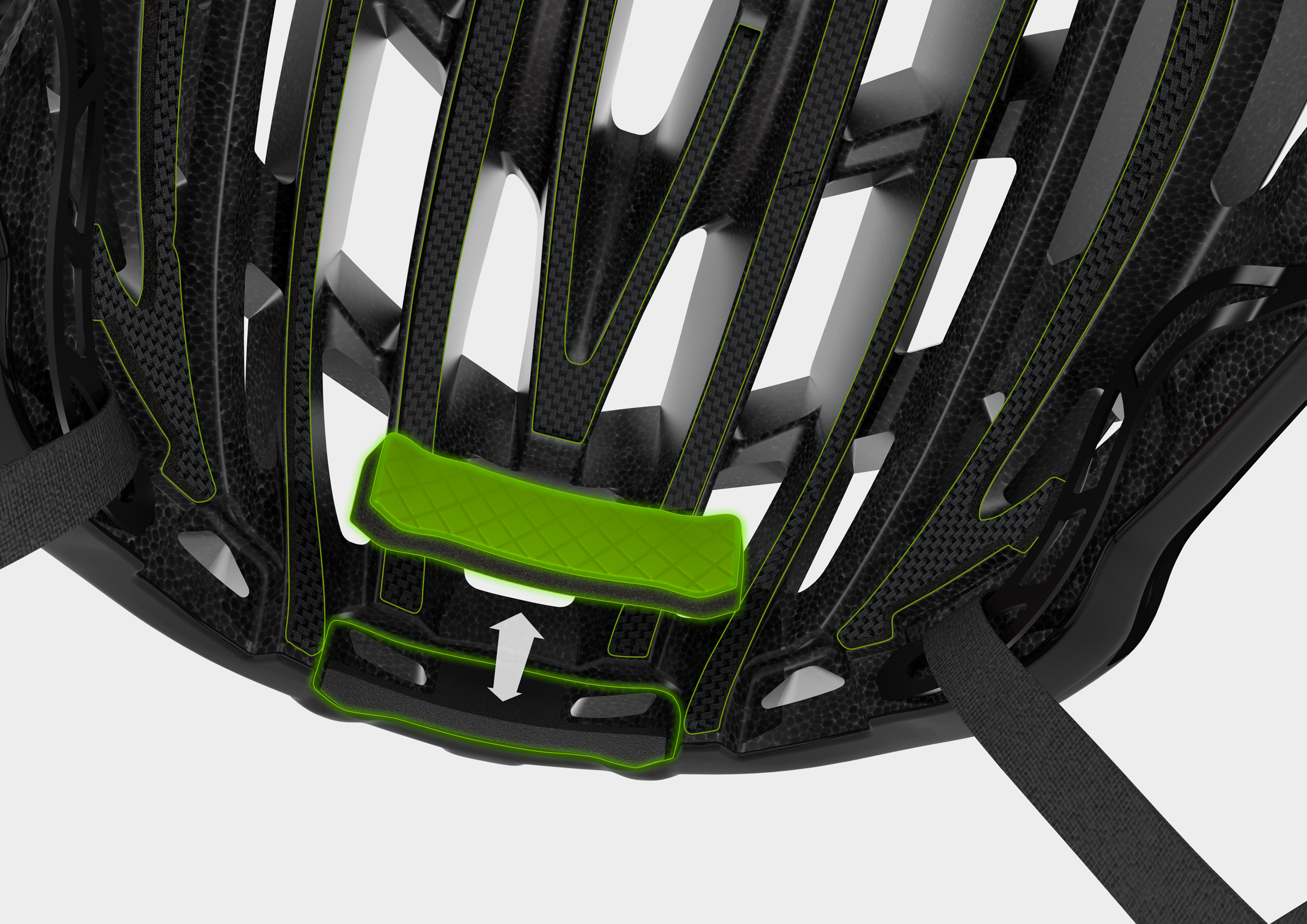
While not as good as the Bontrager Velocis, Miles found the Valegro to be a pretty comfortable lid. It uses 8 narrow, moderately thick pads running along the ribs of the helmet. While 4 of those reach as far as your forehead, Kask gives you the option of using an additional 1.5″ horizontal pad across at the center of your forehead. This pad covers the two of four small, lower vents closest to our forehead’s center for added comfort on days when you don’t need maximum cooling.
As is often the case, the sunglasses fit with this helmet depends on the shades you are wearing. Both Nate’s Oakley Radar EV Path and prescription sunglasses sat on top of the circumference strap above his ears. Neither would sit securely enough for him to feel comfortable riding with them. His Oakleys did dock safely in the helmet but his prescription ones didn’t.
Miles felt secure only with his 100% sunglasses placed under the circumference strap. Docking them in the helmet upside down worked best. He had to use a bit of force to get them to dock either way and then they sat far off the helmet. Not a great look.
The Valegro is the only helmet in this review that doesn’t use a MIPS liner or other added safety technology. That said, the Virginia Tech bicycle helmet ratings in which MIPS helmets perform so well rate the Valegro “good” at 3 out of 5 stars.
Giving you more options than most other helmets while shunning some of their flashiness, Valegro comes in 14, mostly muted and often matt colors like gypsum, pine green, and anthracite in addition to the basic black, white, red and bright light blue.
Specialized S-Works Prevail II – Many strengths along with some flaws
Market price USD$250, £210, €280. Available at the best prices through these links to my top-ranked store Competitive Cyclist in the US/CA and at recommended store Tredz for UK/EU residents.
The Specialized S-Works Prevail II helmet has a lot of strengths but a couple of basic design drawbacks that hold it back from what it could be.
Since Nate wears the S-Works Evade II aero road helmet for most of his road riding, he was probably the best judge of the differences in fit, comfort, and other criteria with this Specialized helmet family member.
Like the Evade, the Prevail’s fit mechanisms are all first-rate and lead to a safe fit for this helmet that runs somewhere between an intermediate and long oval shape. The circumference strap adjustment dial is high quality, audibly clicks as you turn it, and holds the retention setting during the ride.
You do have to take the helmet off your head to adjust the height. But once set, it stays in place.
The Prevail doesn’t come so far down on his forehead like the Evade does to prevent Nate from wearing his brimmed cap. Flipped down, the brim provides added shade on a trail or upright ride but he’ll put it up for full visibility when riding in a more aero position.
As with the Evade and Kask helmets, the down strap length and fixed junction position are not adjustable. And while the Evade’s length and position fit Nate’s head just right and the Kask’s are all wrong for him, the Prevail falls somewhere in between. The Prevail’s rear down straps run a bit loose so they don’t rub the backs of his ears but they do flop around in the wind (the straps, not the ears).
Curiously, and unlike most other helmets including his Evade, the down straps come out from the edge of the Prevail shell rather than inside of it. So instead of the straps closely following the contour of his (or your) face, they start about an inch away from it.
With this distance, your sunglasses arms more naturally run underneath the down straps (violating Velominati Rule #37 (look it up) and causing them to flop around in the wind at speed. There must be a good reason for Specialized to have designed the straps this way, perhaps to avoid conflicting with the MIPS liner, but the result seems like a big drawback in fit, aero drag, and style.
Fortunately, the thin circumference strap doesn’t interfere with the arms of his sunglasses. And, both his prescription sunglasses and Oakley Radar EV Path dock securely inside the Prevail’s vents.
The helmet is comfortable but Nate found the pads lack any kind of friction grip to keep it from sliding forward without overtightening the circumference dial on bumpy, off-road surfaces. This seems like an easier thing for Specialized to fix.
Miles, my quick to sweat fellow tester, kept cool in this helmet longer than in the Bontrager and Lazer though not quite as long as the Kask.
Specialized’s ANGI crash sensor and notification app come with this helmet. User reviews have been mixed around how easy it is to set up the app, how sensitive the sensor is, and how well it notifies your designated rescuers after a crash.
While I’m sure they can do better in future iterations, I applaud Specialized for sticking their nose out and blazing this path. The ANGI probably puts them in a no-win expectations game with customers. If it does anything less than it claims – it doesn’t notify a rescuer or does when it was just a false alarm, they lose. If it does what it is supposed to do, they likely don’t win because, well, it was supposed to do what it did. And after all, you’ve crashed badly enough to need a rescue so you probably aren’t thrilled in the first place.
Meanwhile, it costs nothing extra (at least not yet) and whatever it might do is more than what any of the other helmets provide. So call me a fan just for trying to make this work.
Nate, admittedly a high-functioning digital native, easily paired the Prevail’s ANGI to his smartphone and linked it to his Wahoo BOLT so that the ANGI starts when the ride does. Otherwise, you have to start the ANGI app each time you set out for a ride. I’d guess most riders aren’t going to do that.
After hitting the helmet hard in his hand, Nate also learned that you can cancel the tone and I assume the notification process right from the Wahoo. This seems like a good feature to avoid alarming your significant other if you have a false or soft impact that sets it off but doesn’t require help.
Garmin has its own crash sensor technology as part of its head units and doesn’t play with Specialized.
Ray has reviews of the ANGI sensor and Wahoo integration as part of his omniverse of wearables reviews. For now, I don’t see ANGI as a reason to buy the Prevail.
Nate saw enough that he liked about the Prevail that would justify him buying it to use instead of his Giro Synthe for non-aero riding days.
And if you like stylin’ while ridin’, the Prevail’s unique colors and color combinations may draw you in. There’s still too much grey, unfinished EPS shell material on display in the Prevail for my liking, but I’m the least stylin’ rider you’ll ever meet.
Lazer G1 MIPS – Best for more rounded shaped heads
Market price USD$250. Available at the best prices through these links to my top-ranked store Competitive Cyclist in the US/CA. Not sold in the UK/EU
The Lazer G1 MIPS appears to be their lightest and most well ventilated of the Lazer helmets, a good deal more so than the popular, less expensive Z1 MIPS. The G1 MIPS also ranks at the top of all road helmets tested in the well-regarded Virginia Tech bicycle helmet ratings.
It’s best suited to fit riders with more of a round oval than intermediate or long oval head shape. As such, the medium size we ordered didn’t fit Miles or Nate very well out of the gate because they have more oval-shaped domes. (For more on different head shapes, scroll up to the drawings and descriptions in the What Matters Most section above.)
That said, they each toughed it out (and rode the helmet a bit looser than they should) to provide some good feedback in the service of you, their fellow road cycling enthusiasts.
Lazer’s fit adjustment uses a circumference dial that sits in the top crown area of the helmet rather than the hanging from the rear strapping like most. The dial is infinitely variable, you don’t hear any clicks as you turn it so you have to go strictly on feel.
Contrary to this design is the adjustment that allows you to raise or lower the circumference strap in the back. Changing the height requires you to take the helmet off and put I-think-I’m-going-to-break-it force into getting the strap off the tab before pushing it down for a new position. Nate also found that the height adjustment range wasn’t enough to grasp the back of his head.
The standard cloth side straps have a fixed length with a 3-way threaded clip that allows you to position both the straps and clip in the right place around your ears.
All of these fit adjustment components work adequately in giving you a range of fit options. They do seem rather minimalist, however for the top-of-the-line helmet that the G1 is. It’s likely this is done to keep the weight and cost down.
The G1’s padding is also relatively minimal, thinner, and narrower across the front against all but the Kask, which has only a narrow optional one. Three wider, thin pads run lengthwise from the front to top of your head. For those of you who wear a cap or beanie like Nate, the center of those pads sat on top of the seam of his cap creating some unnecessary discomfort.
Altogether, the Lazer G1 MIPS helmet is adequately comfortable though not one you’d pick for maximum comfort and the least comfortable of those we tested for this review.
Miles did come away from his fit efforts and comfort observations with a sense that the helmet felt quite light, true to its actual weight.
He also noted the good cooling provided by this Lazer. It took a lot longer for the sweat to start flowing when wearing the G1 than his regular Kask Protone helmet. However, the Kask Valegro and Specialized Prevail held off his natural evaporative tendencies even longer than the G1.
Sunglasses fit and docking was a mixed bag. Miles’ 100% sunglasses arms went over the top of the internal helmet strapping without issues but fell out easily when he did a trial docking before launching himself and bike into orbit. Quite the opposite with Nate’s Oakleys Radar EV Path which he couldn’t secure enough to be comfortable for take-off but docked quite well in the G1.
No doubt, this is a sharp-looking helmet that comes with a unique structure and in colors beyond black and white like flash orange, purple haze, and matt blue-grey that will get noticed by riding buddies and driving frenemies alike.
Related Reviews
Thank you for reading. Please let me know what you think of anything I’ve written or ask any questions you might have in the comment section below.
If you’ve benefited from reading this review and want to keep new ones coming, buy your gear and kit after clicking the store links in this review and others across the site. When you do, we may earn an affiliate commission that will help me cover the expenses to create and publish more ad-free, subscription-free, and reader-supported reviews that are independent, comprehensive, and comparative.
If you prefer to buy at other stores, you can still support the site by contributing here or by buying anything through these links to eBay and Amazon.
You can use the popup form or the one at the bottom of the sidebar to get notified when new posts come out. To see what gear and kit we’re testing or have just reviewed, follow us by clicking the icons below.
Thanks, and enjoy your rides safely! Cheers, Steve
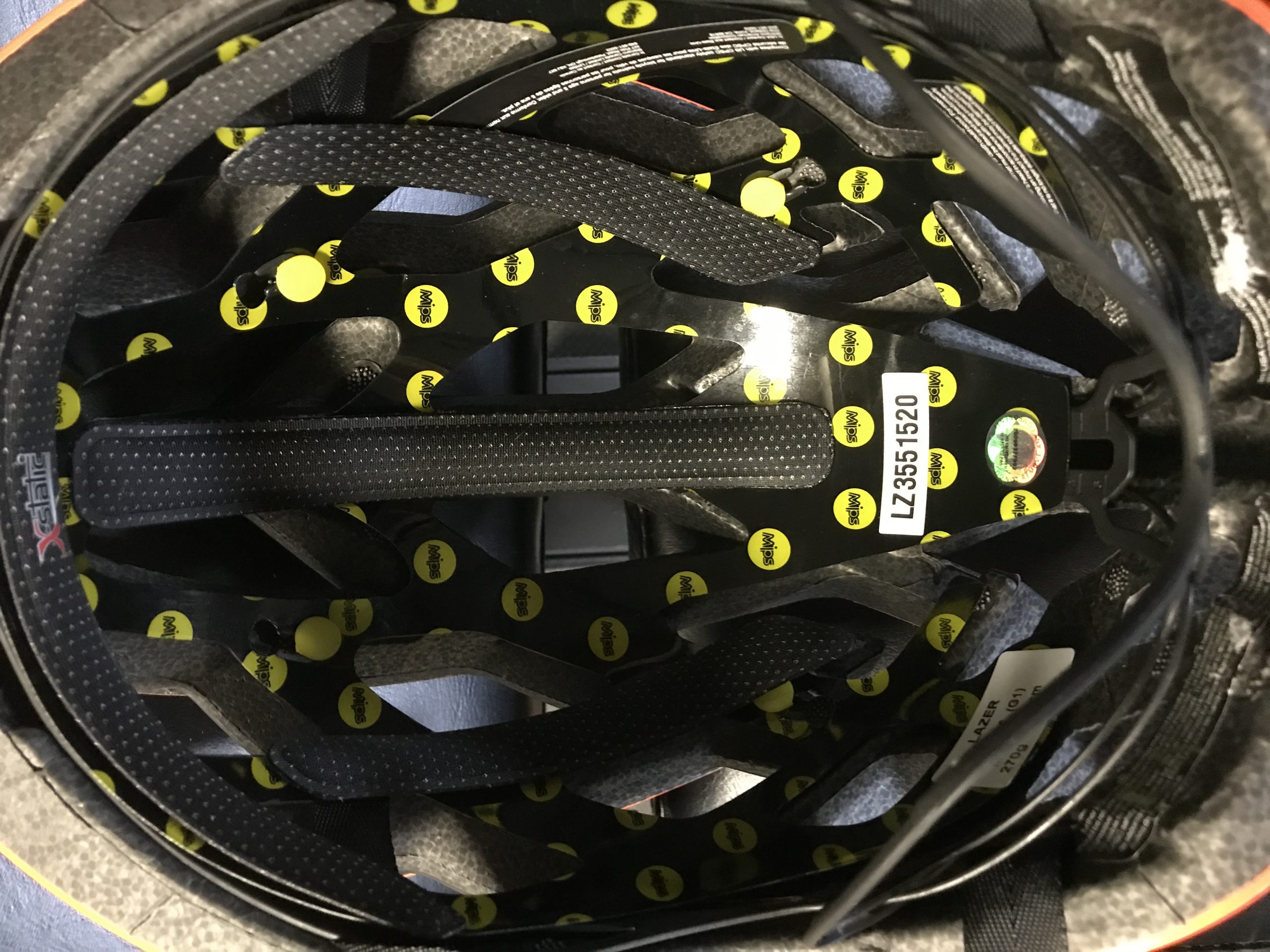
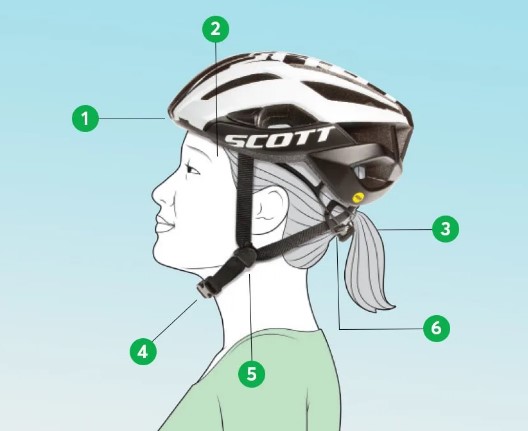
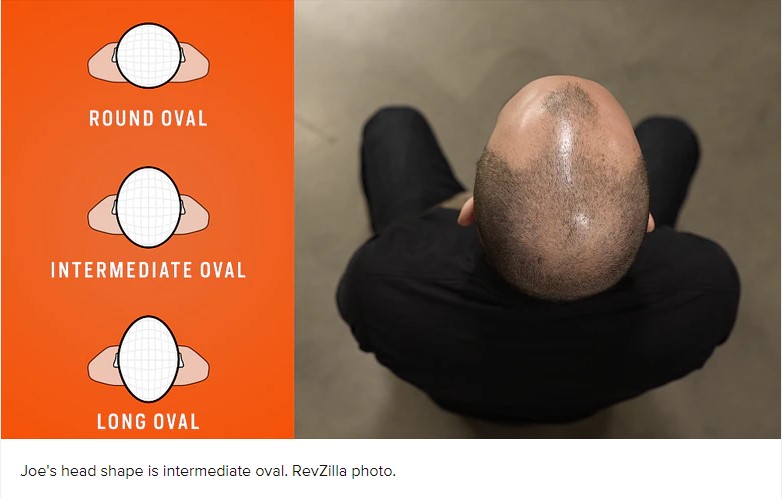
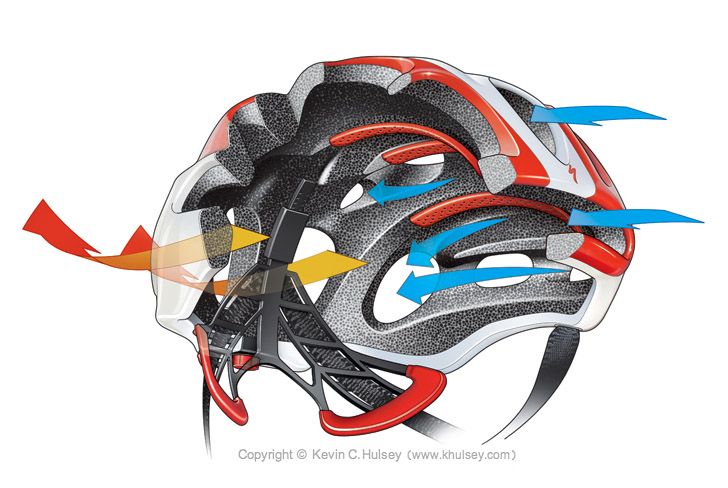



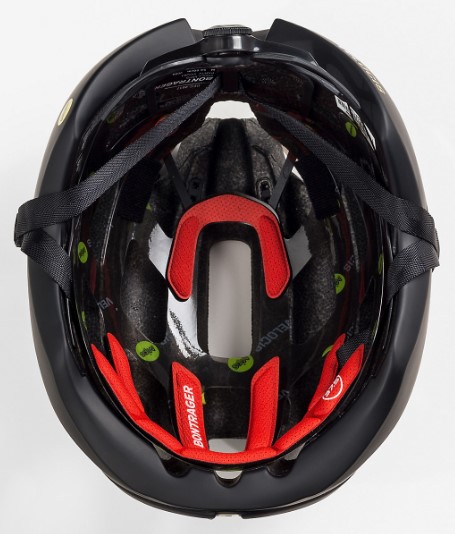

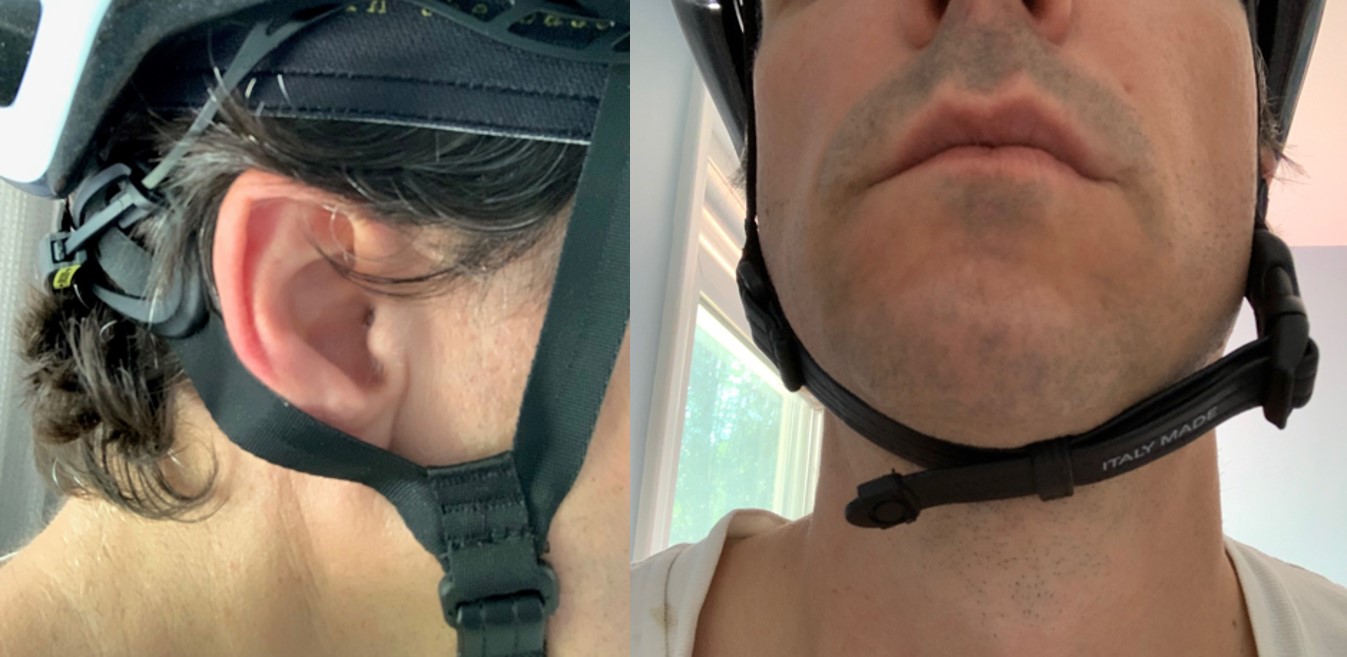




Great review! I opted for the Evade, and found the second I put it on, it fit better than any helmet I’ve ever had. Light, cool, ANGI works good, but like you say, could be improved.
Heard a lot about Hexr – what’s your take on that? I had narrowed it to models like – Hexr or a Abus game changer or Giro Synthe. can you please recommend…
Sulthan, Hexr is a custom made helmet and isn’t approved by US certification body (CPSC) so I couldn’t test it. Looks more like an aero than .ight and cool helmet. Weight unspecified. Also is £299, way over my target. Abus Game Changer is an aero helmet. Synthe isn’t Giro’s coolest/most vented helmet by their own admission. Giro Aether is but it’s way over my price target and isn’t particularly light. Nate also has a Synthe and says it’s not on par with the ones tested here. Steve
As always, thanks for the unbiased perspective you provide, Steve. I especially appreciate you including the insight into what head shape each helmet caters to. How about ease of removing the pads for cleaning? As a follically challenged guy who can work up a good sweat, I value the ease of swapping out/washing pads. Any insight into how those Spesh Prevail pads remove? Based on all those bow-tie connectors, it looks like a long tedious process.
TIA
DMac, Ha, you got me. I guess I can’t ever give my fellow cycling enthusiasts enough details! I need to find a FC (follically challenged) tester for our next review. A couple of the FC guys I know wear caps to keep from getting burned in the summer and cold in the other seasons.
But to your question, yes, the pads are attached with Velcro and remove easily. Steve
https://1drv.ms/u/s!AgB5l6KGfJf4g5crBxV2AQI4_zSdig?e=0uxUtD
I see a lot of POC helmets where I ride in SoCal. Any thoughts on their product line?
Robert, I reviewed and recommended their aero road helmet. You can read that review here. Steve